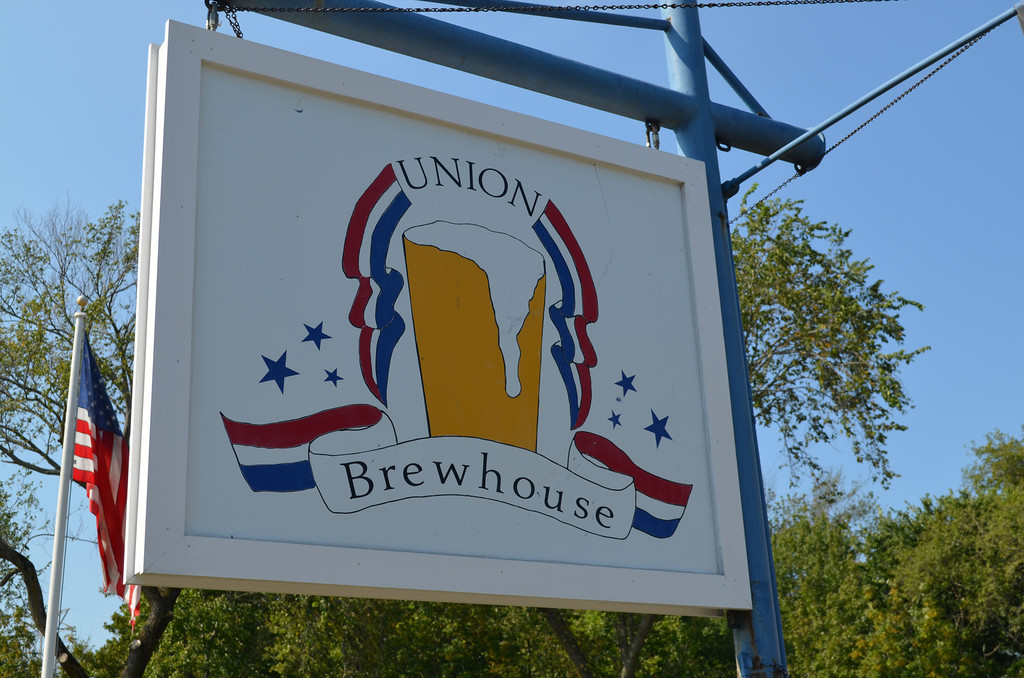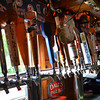
It was 1996, just over halfway through the last decade of the millennium. One half of the music world was anticipating the release of Pantera’s “The Great Southern Trendkill” while the other half was watching Jamiroquai moonwalk forward and swallow Alanis’s “Jagged Little Pill.” MTV had one foot in the grave and the other on the throat of anything but mainstream music. Timothy Leary was dead and so was being depressed and wearing flannel. It was a pivotal period of time in all areas of pop culture and the stage was set for an all-out war against anything comfortable and normal.
Embracing this thirst for something different, the US craft beer industry came in brandishing a battle axe sharpened by the stone of nonconformity, positioned to mutilate the mundane and pillage the status quo. It was backed by an ever-increasing stronghold that grew by 333 breweries that year, which equated to a weekly dose of greatness. Out of the flames that year emerged a small brewery in Escondido, CA going by the name of Stone Brewing and another up the coast named Firestone Walker out of Paso Robles, CA. With these additions, the US craft beer industry finally broke the 1,000 brewery ceiling that wasn’t even a thought back in ’78 when the count barely touched 80. It was becoming quite the unstoppable force.
 In such volatile times, the emerging craft beer market must have seemed risky and unstable, but as the old adage goes, “If you want to be good, you need to fit in. If you want to be different, you better be great.” Tom Powers, the owner of Union Brewhouse in Weymouth, MA set out to take the road less traveled and in a sea of fizzy yellow macro lager, decided to shed the chains of normality and open a “no crap on tap” craft beer-focused bar in the South Shore of Massachusetts.
In such volatile times, the emerging craft beer market must have seemed risky and unstable, but as the old adage goes, “If you want to be good, you need to fit in. If you want to be different, you better be great.” Tom Powers, the owner of Union Brewhouse in Weymouth, MA set out to take the road less traveled and in a sea of fizzy yellow macro lager, decided to shed the chains of normality and open a “no crap on tap” craft beer-focused bar in the South Shore of Massachusetts.
He wasn’t filling a need, he was creating it. Just like the music industry around that time, there wasn’t a desire for something different until someone did something different. Some might look back at his decisions and call him a visionary and think that he knew something other people didn’t. However, according to Tom, “I did it because I loved craft beer and it just blew up. The business keeps getting busier and the beer just gets better.”
 Over the years, Union Brewhouse has become one of the strongest pillars of the craft beer community in the South Shore. They’ve grown from their original 12 taps to 16 plus a cask, which still doesn’t seem like enough sometimes when you know what Tom has waiting in the cooler. They’ve created an unbelievable culture and a dedicated community of good, honest beer drinkers. When something rare goes on tap, Tom immediately puts out a note on Facebook, which I’m more than confident impacts traffic for 10 square miles and subsequently produces a tapped keg and sad, empty glasses within a matter of hours. (I would pay money to get a text an hour or two before that Facebook post goes out, by the way). In addition to supporting the community of craft beer lovers that they’ve attracted and the new ones they’ve created, they’re constantly converting macro-lovers with their list of crossover beers on tap and in bottles.
Over the years, Union Brewhouse has become one of the strongest pillars of the craft beer community in the South Shore. They’ve grown from their original 12 taps to 16 plus a cask, which still doesn’t seem like enough sometimes when you know what Tom has waiting in the cooler. They’ve created an unbelievable culture and a dedicated community of good, honest beer drinkers. When something rare goes on tap, Tom immediately puts out a note on Facebook, which I’m more than confident impacts traffic for 10 square miles and subsequently produces a tapped keg and sad, empty glasses within a matter of hours. (I would pay money to get a text an hour or two before that Facebook post goes out, by the way). In addition to supporting the community of craft beer lovers that they’ve attracted and the new ones they’ve created, they’re constantly converting macro-lovers with their list of crossover beers on tap and in bottles.
I sat down with Tom and John Bryant from Granite Liquors, along with a few other usual suspects, to talk about the community they’re a part of. Aside from sampling some beers and engaging in the typical existential craft beer conversation, my goal was akin to that of a history lesson – to find out from Tom what it was like being such an early player in a very immature and reasonably untapped market (pun intended).
You must have had some serious insight into the craft beer world along with the ins and outs of running a bar to dive right in with a craft beer bar in ’96.
Tom: I tell all my guys, “The only experience I had running a bar before I bought this place was watching Cheers.”
So what was Union Brewhouse before you bought it?
Tom: It was your typical neighborhood dive. Budweiser, booze, and darts.
What percentage of your taps were craft beer when you first opened?
Tom: All of them. No crap on tap since ’96.
I think you were the first one in the area to do that, right?
Tom: I think so. If I wasn’t the first, I was definitely close.
What did your lineup look like on a typical day back then?
Tom: Sierra Nevada Pale Ale, Magic Hat #9, Tremont Ale, Sam Adams Boston Lager, Sam Adams Seasonal, Harpoon IPA, Harpoon Seasonal, Long Trail Ale, Guinness, Bass, Belhaven Scottish Ale and Wachusett Blueberry Ale
Wow, I can think of a handful of bars that didn’t have a list like that last week, much less in 1996. What do you have on tap today?
Tom: It’s always changing, let’s look… Maine Beer Co. King Titus Porter, Newburyport Greenhead IPA, Sierra Nevada Hoptimum IPA, Brewmaster Jack Soleil Saison, Southern Tier Pumking, Wachusett Blueberry Ale, Slumbrew Sittin’ On Hop of the World, Blatant IPA, Wormtown Be Hoppy IPA, Mayflower IPA, Harpoon IPA, Sam Adams Octoberfest, Harpoon Pumpkin UFO, Shipyard Pumpkinhead, Palm Belgium Amber, and BBC Lost Sailor.
Man, with all this beer, how do you decide what to put on tap?
Tom: It’s tough because it’s all good. I try to keep something for everybody on tap.
John – how many people come into the store looking for something they had at Union?
John: At least 2 a day during the week and even more on Friday and Saturday. I’d say about 15 a week.
Do you think those same people would come in without having tried something at Union?
John: People are less likely to come in and find something new on their own, but if they try something at Union with friends, they might want to bring some home. That’s where we come in. They gradually become more discriminating and adventurous. Which is a good thing.
So even today, with more US craft beer than ever coming from more than 2,400 craft breweries, we can’t forget how this industry is able to thrive. It’s the places that pour the beer and the people who are constantly thirsty for more that make it all possible. Sometimes, you’re meeting an existing demand and other times, you need to create that demand. Either way, if you pour it, they will come.
 American Craft Beer The Best Craft Beer, Breweries, Bars, Brewpubs, Beer Stores, And Restaurants Serving Serious Beer.
American Craft Beer The Best Craft Beer, Breweries, Bars, Brewpubs, Beer Stores, And Restaurants Serving Serious Beer.
